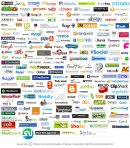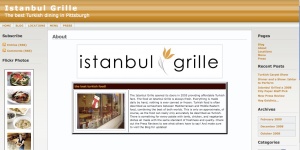 When I try to explain what it is I do for people/businesses who want a new web presence, the term “Web 2.0” inevitably comes up. So what is “Web 2.0” Consider Web 1.0 to have been the original incarnation of the World Wide Web. In this model, companies were very proprietary, and everything was held apart. For each site you might want to use, you would have a different user name and password, and there was no connectivity between the two. In the old WWW, content was modifiable only by the owner, and not often. Websites were more static pages announceing a presence. After the dot com bubble burst, more and more companies moved to a new model (elements of it had existed prior). In Web 2.o, the two biggest aspects are: INTERCONNECTIVITY and INTERACTIVITY.
When I try to explain what it is I do for people/businesses who want a new web presence, the term “Web 2.0” inevitably comes up. So what is “Web 2.0” Consider Web 1.0 to have been the original incarnation of the World Wide Web. In this model, companies were very proprietary, and everything was held apart. For each site you might want to use, you would have a different user name and password, and there was no connectivity between the two. In the old WWW, content was modifiable only by the owner, and not often. Websites were more static pages announceing a presence. After the dot com bubble burst, more and more companies moved to a new model (elements of it had existed prior). In Web 2.o, the two biggest aspects are: INTERCONNECTIVITY and INTERACTIVITY.
Interconnectivity means that many usernames became portable– i.e. I can sign in to my wordpress account and then be automatically signed in to my platial account. Now you can update content one one site from another– for example, when I update my twitter status (either on their www page or via my cell phone), it is linked to my facebook status, which then automatically updates. This is the period of “widgets,” where you can bring everything together. On your blog, you can have widgets for your bookmarks, photos, maps, etc. The danger with this becomes overexposure, but in time, I believe the programs that really work will surive and the others will fall to the wayside.
Interactivity means that the website is no longer a static thing controlled by one person or entity. In Web 2.0, feedback is always welcome, communication is key, and file sharing is ever present. Flickr is an example of a site that uses Web 2.0. Users can not only upload photos, they can share them with friends, with users with similar interests, with groups. They can also comment on other users photos, and add users as “friends” for easy access. All of the social networking sites use Web 2.o, but it is becoming more and more important on the individual/business website. If you want to survive in this changing World Wide Web, you want to think about adding INTERCONNETIVITY and INTERACTIVITY to your site. Give your readers a stake in what goes on, and they will keep coming back.
For more information, check out this Web 2.0 Reference Guide from Radford University Technology in Learning








